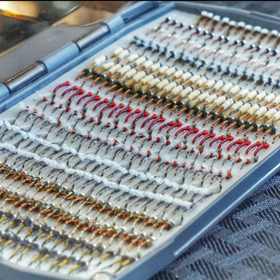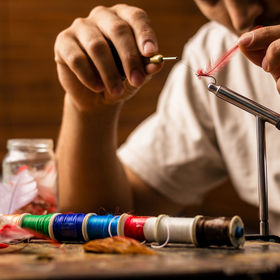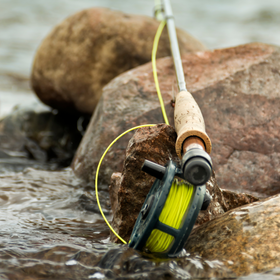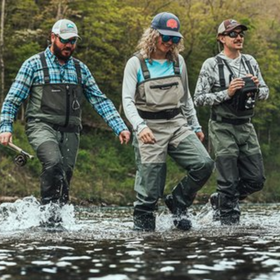Fishing Report: Deckers
South Platte River
The mileage below Cheesman Canyon is the renowned Deckers area, a world-class fishery with easy access and lots of opportunity. The best fishing is from Bridge Crossing to the lower boundary of the Tee Pee Club. Like Cheesman Canyon, the fish are challenging to catch, and there is no substitution for a good dead drift. Deckers can offer good dry fly fishing at times but like upstream in the “The Canyon” a good nympher will catch the majority of fish. Anglers can expect to catch assortment of browns and rainbows with some exceeding 20 inches. The river is made up of riffles, runs, shelves and gravel bars, and nice pocket water. The ideal flow for Deckers is between 150 and 400 cfs. The regulations are two trout over 16 inches in length and flies and lures only. Please consider catch and release on all fish caught in the area.
Updated 10/18/25
Flows have not changed much at all since our last report. We're still seeing good midge and baetis hatches throughout the day.
This is a fun time of year to fish the South Platte that offers good opportunity to catch fish nymphing, dry fly fishing, and/or on streamers. Eggs, leeches and small baetis are go-to for nymphing rigs. Small Parachute Adams or Sparkle Duns are great immitations if you see trout eating dries. For streamers, we like Chicago Overcoats or Wooly Buggers right now.
Updated 9/26/25
Fall is here! Flows have dropped and are now at 170 cfs. While this is lower than we've been used to most of the summer, they're in decent shape for this time of year. They'll likely only get lower from here on out, so be stealthy!
Midges and baetis are most of the diet right now. It's a good time to start switching your nymphing rigs to egg and midge/baetis combos. That said, you might get lucky enough to catch some fish on dries during the baetis hatch.
Updated 9/12/25
Flows have bumped back up to 270 cfs since our last update, and that's been good news for the fishing!
We've been seeing hatches of midges, baetis and PMDs here. The baetis hatch will be better on cloudy, cooler days. It's a good time to have a dry fly rod rigged and ready. Given the flow bump, for your nymph rigs try scuds, worms or stoneflies as your lede pattern, with smaller "match the hatch" tailwater flies dropped off.
The South Platte River at Deckers is known for its fish, hatches, and crowds -- especially true during summertime! The fun part about this time of year is the variety of bugs hatching and the chances they present at catching fish on a dry fly. Anglers who stick with nymph fishing will definitely still find success.
Here are some effective fly patterns to consider for summer fishing in this area:
Terrestrials: Chubby Chernobyls, Stimulators, Amy's Aunts are all classic "big" dry fly patterns that can be fished as attractors or to imitate hoppers or stoneflies.
Caddis: One of the main summertime staples for trout. The classic Elk Hair Caddis is a tough pattern to beat for imitating adult dries, while Barr's Graphic Caddis or Sparkle Pupa for emergers work great. For larva, Electric Caddis or a Buckskin is the way to go.
Pale Morning Duns: This hatch can bring some of summer's best dry fly fishing! An Adams or Sparkle Dun in 16 or 18 will effectively imitate an adult PMD. A Pheasant Tail or Juju PMD are great to imitate the bug's emergence.
Blue-Winged Olives (BWOs): BWOs hatch from Spring into early Summer. or dries, carry High-Vis Baetis and Parachute Adams in sizes #18 to #22. For nymph, pheasant tails, Jujubaetis, RS2s, and foam wing emergers in the same sizes.
Midges: Midges are prevalent year-round and still a key staple during summer, especially in the mornings. Use patterns like Blood Midges, Black Beauties, and Pale Olive Larvas in sizes ranging from #22 to #24.
As always, observe the water conditions, insect activity, and the behavior of the fish to determine the most effective patterns and presentations. Adjust your techniques throughout the day as conditions change.
The shop staff and guides at The Blue Quill Angler are very familiar with the South Platte River and can provide specific insights into recent hatches, successful patterns, and techniques tailored for summer fishing in the area. They often have firsthand knowledge that can greatly enhance your fishing experience.



Pictures by @ddrapsflyfishing





